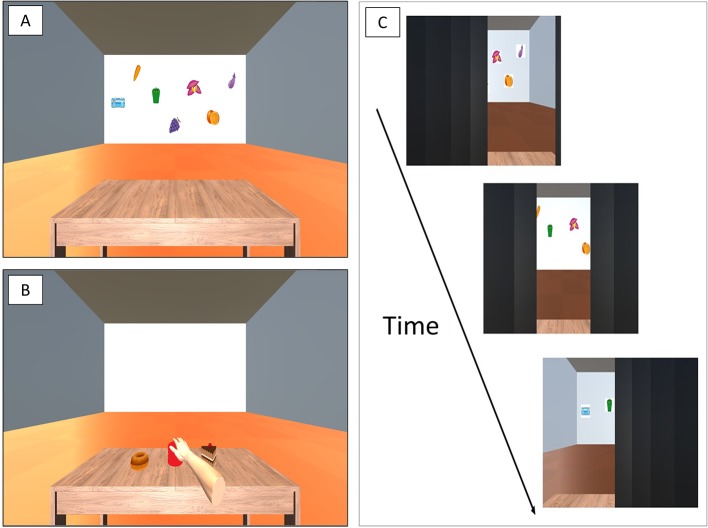Figure 3.
Immersive VR programme. A VR space room (20 m×20 m×8 m) was set up for both near and far space training, in which a desk was placed in the VR space. (A) For far space training, a virtual screen was located 15 m from the patient and seven visual stimuli were placed on the screen. Visual stimuli flashed consecutively for 6 s each from the right to the left side of the screen. (B) For near space training, three objects were placed on the table in the VR space. The patient was able to move the VR hand by moving his own hand; when the VR hand touched the object, the object turned red. (C) To draw attention to the left side in the VR environment, we included a moving slit and slowly drew the projected image seen by the patient towards the left (the slit was added as per the far and near figures shown above). The test participant-centred slit moved 155° over time; the perceivable angle of the moving slit was fixed at 45°, and the moving speed was 2.58°/s; moving 155° in 1 min. VR, virtual reality.

